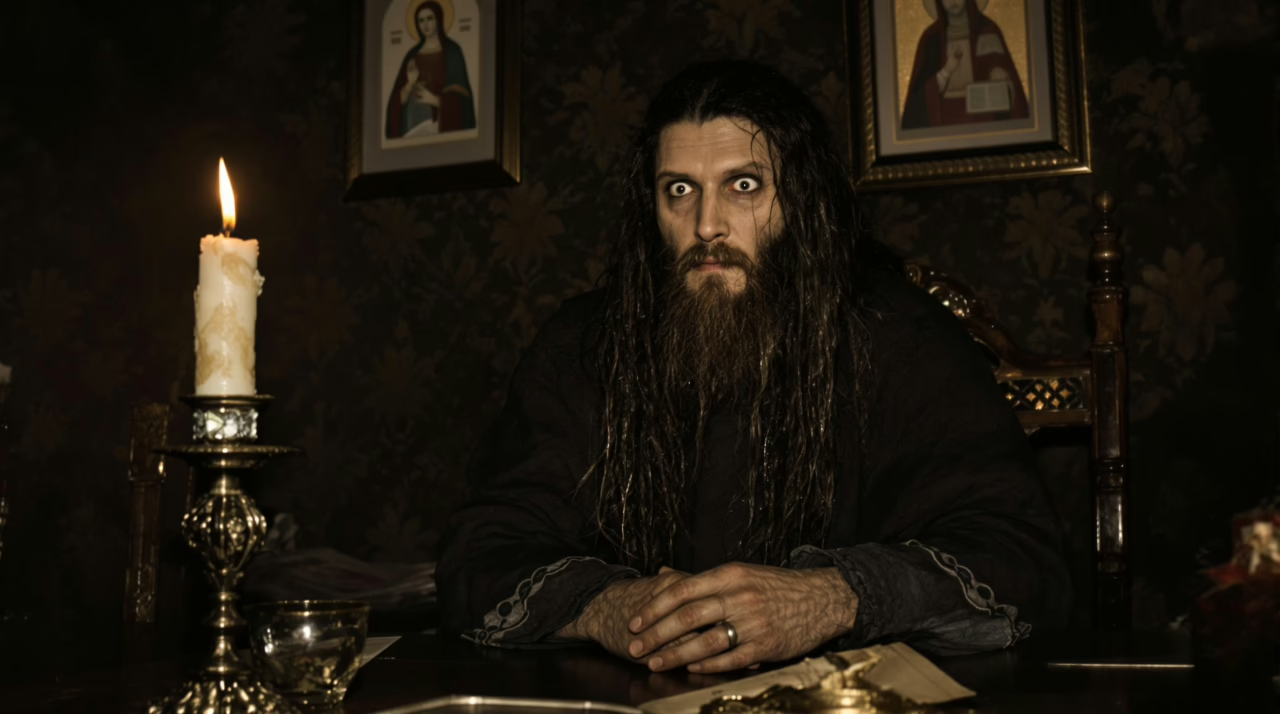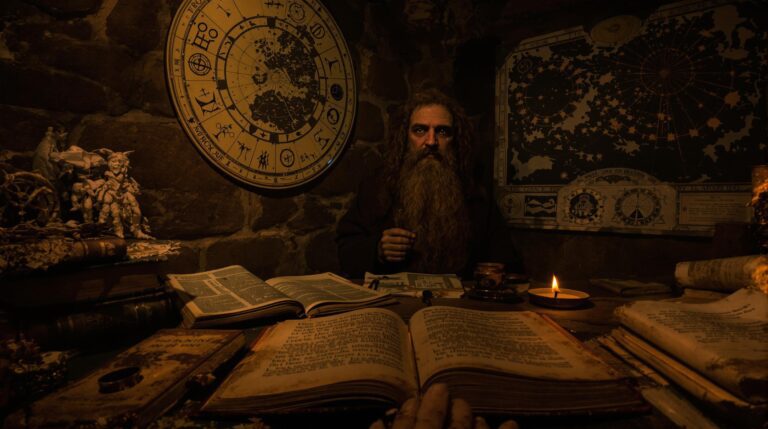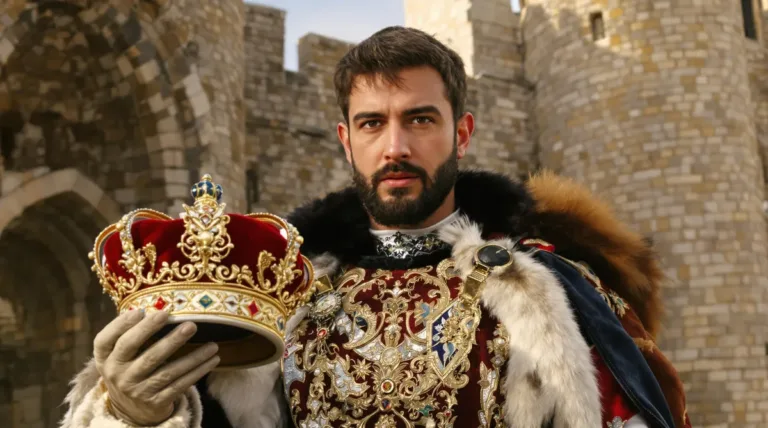Grigori Rasputin: Saint or Sinner?

Grigori Rasputin’s life presents a complex tapestry of mysticism, power, and moral ambiguity.
His rise from humble beginnings to the heights of imperial favor raises questions about the nature of influence and the boundaries of faith.
While some view him as a healer and a savior, others see a manipulative figure steeped in scandal.
This duality prompts a significant inquiry: can one man’s legacy be so easily categorized, or does it reflect the tumult of an entire era?
Principal Conclusions
Hide- Grigori Rasputin's early life in a Siberian village fostered deep spirituality, contributing to his perceived mystique and healing abilities.
- His influence over the Tsarina and the royal family blurred the lines between faith and manipulation, raising questions about his motives.
- Accusations of debauchery and unorthodox practices led to scandal, alienating the nobility and tarnishing his reputation as a trusted advisor.
- The chaotic circumstances of his assassination fueled conflicting narratives, complicating perceptions of him as either a saintly healer or a sinister figure.
- Rasputin's legacy continues to provoke debate, oscillating between views of him as a misunderstood mystic or a dangerous manipulator of power.
Early Life of Grigori Rasputin in Siberia

Grigori Rasputin’s formative years in a remote Siberian village shaped the enigmatic figure he would later become.
Amidst the harsh realities of rural life, he was steeped in the local traditions and mysticism that would inform his later beliefs and practices.
This unique upbringing raises questions about how isolation and environment can mold a person’s destiny, particularly one as polarizing as Rasputin.
Growing Up in a Remote Village
Grigori Rasputin’s formative years in a remote Siberian village were steeped in a vibrant mosaic of local beliefs and traditions that shaped his worldview.
His family background, rooted in both peasant life and Orthodox Christianity, provided a fertile ground for his early spiritual inclinations.
As he navigated the complexities of rural existence, the first signs of his profound spiritual leanings began to emerge, suggesting a destiny that would intertwine the sacred and the profane.
Family Background and Local Beliefs
In the remote village of Pokrovskoye, nestled within the harsh landscapes of Siberia, the young Rasputin was steeped in a tapestry of local beliefs and traditions that would shape his enigmatic persona.
His family, steeped in peasant customs, embraced a blend of Orthodox Christianity and folk spirituality, creating a fertile ground for the mystical and the mundane to intertwine, thereby influencing Rasputin’s future path.
First Signs of Spiritual Leanings
The formative years of Rasputin’s life in the isolated village of Pokrovskoye were marked by an awakening of spiritual awareness that would later define his complex identity.
Surrounded by the mysticism of Siberian folklore and deeply entrenched Orthodox traditions, young Grigori began to explore the boundaries of faith, revealing an insatiable curiosity that would challenge societal norms and ignite his tumultuous journey toward spiritual prominence.
Rise to Influence at the Imperial Court
Grigori Rasputin’s ascent within the imperial court reveals a complex interplay of trust, influence, and controversy.
His ability to gain the Tsarina’s confidence positioned him as a pivotal figure in the royal family, yet this bond also paved the way for widespread scandal and moral outrage.
As Rasputin’s reputation evolved from mystic to manipulator, the implications of his presence at court raised critical questions about power dynamics and the fragility of royal authority in turbulent times.
Gaining the Tsarina’s Trust
Rasputin’s ascension at the imperial court hinged on his purported ability to heal the ailing Tsarevich, a claim that not only captivated the Tsarina but also fostered a dangerous dependency on his presence.
This reliance on a mystic figure raised questions about the stability of the Romanov dynasty, as the family’s trust in Rasputin blurred the lines between faith and manipulation.
Consequently, his influence expanded, positioning him as a pivotal, yet controversial, figure within the imperial circle.
Alleged Healing of the Tsarevich
A profound turning point in the tumultuous saga of Imperial Russia emerged with the alleged healing of the Tsarevich Alexei, a moment that catapulted Rasputin into the inner sanctum of the royal family.
This event not only solidified his influence but also positioned him as a figure of hope amid despair, raising questions about faith, power, and the role of mysticism in governance.
The Royal Family’s Dependence on Rasputin
As the weight of the imperial crown pressed heavily upon the Russian royal family, their increasing reliance on Rasputin became both a lifeline and a source of controversy.
Gaining the Tsarina’s trust, Rasputin positioned himself as an indispensable advisor.
His perceived mystical powers offered solace amid political turmoil, yet this dependence sparked suspicion, ultimately challenging the very foundations of the monarchy’s legitimacy and stability.
Reputation and Scandal
As Grigori Rasputin ascended to prominence within the imperial court, whispers of debauchery and unorthodox practices began to swirl, casting a shadow over his influence.
These rumors ignited public outcry and fueled the distrust of aristocrats, who saw him as a dangerous anomaly within the sacred walls of power.
This complex interplay of reputation and scandal not only shaped Rasputin’s legacy but also reflected the tumultuous political landscape of early 20th-century Russia.
Rumors of Debauchery and Unorthodox Practices
While many revered Grigori Rasputin for his alleged mystical abilities, whispers of debauchery and unorthodox practices soon clouded his ascent at the imperial court.
These rumors sparked intrigue and scandal, painting a controversial figure whose influence was both magnetic and unsettling.
- Wild parties with nobility
- Allegations of sexual encounters
- Spiritual rituals bordering on the bizarre
- Excessive indulgence in drink
- Claims of supernatural healing intertwined with vice
Public Outcry and Aristocratic Distrust
How could one man provoke such a torrent of public outcry and aristocratic distrust while simultaneously rising to the height of influence within the imperial court?
Rasputin’s enigmatic presence, marked by scandalous rumors and an uncanny ability to manipulate the tsar’s fears, fueled both fascination and resentment.
This dichotomy revealed deep societal fractures, as traditional elites grappled with an outsider’s unprecedented sway over the monarchy.
Rasputin’s Controversial Role in Russian Politics
Grigori Rasputin’s influence over the Tsarina during World War I positioned him as a pivotal, yet polarizing figure in Russian politics.
His advisory role not only shaped decisions at the imperial court but also alienated the nobility, who viewed him as a dangerous interloper.
This dynamic raises critical questions about the intersection of mysticism and power in a crumbling empire.
Advising the Tsarina During World War I
Rasputin’s influence over the Tsarina during World War I fundamentally altered the dynamics of Russian governance, as his recommendations on government appointments frequently disregarded traditional political hierarchies.
This unprecedented sway not only alienated military leaders but also fueled tensions among political elites, leading to widespread dissent.
As Rasputin’s role became increasingly controversial, the implications for Russia’s wartime strategy and political stability grew dire.
Impact on Government Appointments
During World War I, the influence of a single figure on the Russian political landscape was profoundly felt, as the relationship between the Tsarina and Rasputin sparked intense controversy and speculation.
His involvement led to significant government appointments that were often viewed as corrupt and self-serving, undermining the integrity of the monarchy.
- Key ministers favored by Rasputin
- Dismissals of competent officials
- Public distrust in leadership
- Manipulation of military strategies
- Erosion of the Tsar’s authority
Tensions with Military and Political Leaders
Although the backdrop of World War I placed immense pressure on the Russian Empire, it simultaneously elevated the controversial figure of Rasputin to a position of significant influence, particularly in his advisory role to the Tsarina.
His intervention in military decisions sparked tensions with political leaders and generals, who viewed his unorthodox counsel as a threat to national security, undermining unity during a critical period.
Alienation of the Nobility
As Rasputin’s influence over the Tsarina grew, the Russian nobility found themselves increasingly alienated, grappling with the unsettling reality of a peasant’s sway over imperial decisions.
Their efforts to diminish his power, marked by intrigue and political maneuvering, repeatedly failed, fostering a climate of resentment and fear.
This dynamic not only undermined the credibility of the monarchy but also set the stage for a broader crisis within Russian society.
Growing Fear of Rasputin’s Influence
Rasputin’s rise to prominence within the Russian court sparked a growing unease among the nobility, who perceived his influence over Tsar Nicholas II and the royal family as a direct threat to their own power and status.
- Unconventional mysticism unsettling traditional hierarchies
- Perceived manipulation of royal decisions
- Heightened tensions within elite circles
- Erosion of noble authority
- Intensifying political animosity towards the monarchy
Failed Attempts to Curb His Power
Despite the mounting opposition, efforts to diminish Rasputin’s influence proved futile, revealing the deep-seated rifts within the Russian aristocracy.
Noble factions, driven by jealousy and fear, launched conspiracies and public campaigns, yet their inability to unite only strengthened Rasputin’s grip on power.
This discord not only alienated the nobility but also exacerbated the instability that ultimately plagued the Russian Empire.
The Assassination Plot
The plot to assassinate Grigori Rasputin reveals a tangled web of intrigue among the Russian nobility, driven by fear and resentment towards his influence.
On a fateful night in December 1916, conspirators executed a plan steeped in uncertainty, with conflicting accounts emerging in the aftermath that challenge the very nature of truth.
This turning point not only sealed Rasputin’s fate but also illuminated the depths of desperation within a crumbling empire.
Conspirators Among the Nobles
The assassination plot against Grigori Rasputin reveals a complex interplay of desperation and loyalty among Russian nobles, particularly Prince Felix Yusupov and his co-conspirators.
Their motives, steeped in the belief that eliminating Rasputin could restore stability to a faltering monarchy, underscore the lengths to which they were willing to go for their cause.
This act of treachery not only signifies a pivotal moment in Russian history but also raises questions about the moral justifications used by those who sought to protect the empire.
Prince Felix Yusupov and Co-Conspirators
A web of intrigue enveloped the Russian nobility as Prince Felix Yusupov emerged as a pivotal figure in the conspiracy against Grigori Rasputin.
The plot intertwined personal vendettas and political ambitions, fueled by a desire for change.
- Yusupov’s noble lineage
- The clandestine meeting at the palace
- Poisoned pastries and revolvers
- An atmosphere of desperation
- The looming specter of revolution
Motives Rooted in Saving the Monarchy
Driven by a profound sense of urgency, the conspirators among the Russian nobility believed that eliminating Grigori Rasputin was integral to preserving the monarchy.
They perceived Rasputin as a corrupting influence, undermining the Tsar’s authority and stability.
This desperate act was framed as a necessary sacrifice, revealing the tension between loyalty to the crown and the desire for a more enlightened governance, ultimately igniting revolutionary fervor.
Fateful Night and Conflicting Accounts
The night of Rasputin’s assassination has become a tapestry of myth and conflicting narratives, with accounts varying wildly on the methods employed to end his life.
Poison, gunshots, and a frozen river intertwine in a dramatic retelling that raises questions about the reliability of those who orchestrated the plot.
As each version unfolds, the line between historical fact and sensational fiction blurs, inviting a reevaluation of Rasputin’s legacy.
Poison, Gunshots, and a Frozen River
Multiple accounts surround the fateful night of Grigori Rasputin’s assassination, creating a tapestry of intrigue that blurs the line between fact and legend.
- A lethal dose of cyanide, seemingly ineffective
- Rasputin’s defiance, rising from the floor
- Gunshots echoing in the dark
- A struggle leading him to a frozen river
- Conspirators debating the morality of their actions
These elements intertwine, shaping a chaotic narrative.
Myths Surrounding His Final Moments
How did the chaos of that fateful night give rise to enduring myths about Grigori Rasputin’s final moments?
Conflicting accounts of his assassination—poison, gunfire, and struggles—created a tapestry of legend.
Each retelling obscured the truth, fueling speculation about his supernatural resilience and sinister allure.
Consequently, the narrative morphed from mere murder to a mythical confrontation between light and dark, capturing the imagination of generations.
Aftermath and Historical Perceptions
The assassination of Grigori Rasputin sent shockwaves through Russian society, prompting immediate reactions that ranged from relief to outrage.
As public sentiment oscillated between viewing him as a sinister figure and a misunderstood mystic, Rasputin’s legacy became increasingly complicated, shaping historical narratives for generations.
This dichotomy not only reflects the tumultuous era of pre-revolutionary Russia but also highlights society’s struggle to reconcile moral ambiguity with its heroes and villains.
Immediate Response from the Public
The public’s immediate response to Rasputin’s influence on the Russian royal family was one of outrage and distrust, greatly tarnishing their image.
As whispers of his manipulations spread, they became emblematic of the broader political decay that ultimately fueled revolutionary fervor.
This potent mix of scandal and discontent not only altered perceptions of the monarchy but also set the stage for seismic shifts in Russian history.
Impact on the Royal Family’s Image
Although many viewed Grigori Rasputin as a mystic and a healer, his association with the Russian royal family irrevocably tarnished their image in the eyes of the public.
- Eroded trust in the monarchy
- Perceptions of decadence and moral decay
- Fueling of public dissent
- Heightened scrutiny of royal decisions
- Catalyst for revolutionary sentiments
This perception shift marked the beginning of the end for imperial authority.
Political Turmoil Leading to Revolution
Rasputin’s influence on the Russian royal family served as a catalyst for widespread political turmoil, ultimately contributing to the revolutionary fervor that swept through the nation.
His controversial presence exacerbated public discontent, as citizens increasingly viewed the monarchy as detached and incompetent.
This disillusionment fueled protests and demands for reform, igniting a collective yearning for liberation from autocratic rule and inspiring a transformative wave of revolution.
Rasputin’s Enduring Legacy
Rasputin’s legacy remains a contentious topic, as debates about his alleged mystical powers continue to captivate scholars and enthusiasts alike.
Modern portrayals in media and literature often oscillate between demonizing and glorifying the enigmatic figure, reflecting broader societal anxieties about power, spirituality, and morality.
This duality not only shapes Rasputin’s historical image but also influences contemporary interpretations of influence and corruption.
Debates Over Mystical Powers
While the historical narratives surrounding Grigori Rasputin often oscillate between reverence and disdain, the debates over his purported mystical powers continue to captivate scholars and the public alike.
- Claims of healing powers
- Allegations of divine visions
- The influence on the Romanov family
- Dueling interpretations of his rituals
- The intersection of faith and skepticism
These facets provoke ongoing discussions about truth, myth, and the nature of belief.
Modern Portrayals in Media and Literature
How has Grigori Rasputin’s enigmatic life and controversial legacy shaped contemporary narratives in media and literature?
His portrayal oscillates between a malevolent sorcerer and a misunderstood mystic, reflecting society’s fascination with duality.
Films, novels, and documentaries often amplify his notoriety, provoking critical discussions about power, faith, and the human condition, ensuring that Rasputin remains a compelling figure in the cultural imagination.
Wrapping Up
In the end, Grigori Rasputin’s legacy is a paradox wrapped in enigma; a man revered as a healer yet reviled as a debauched manipulator.
Ironically, the very traits that led to his rise—mysticism and influence—also sealed his fate, as the nobility conspired to rid themselves of his perceived malevolence.
Consequently, history’s judgment remains ambivalent, leaving Rasputin immortalized not merely as a sinner or saint, but as a haunting reminder of power’s seductive yet perilous nature.


